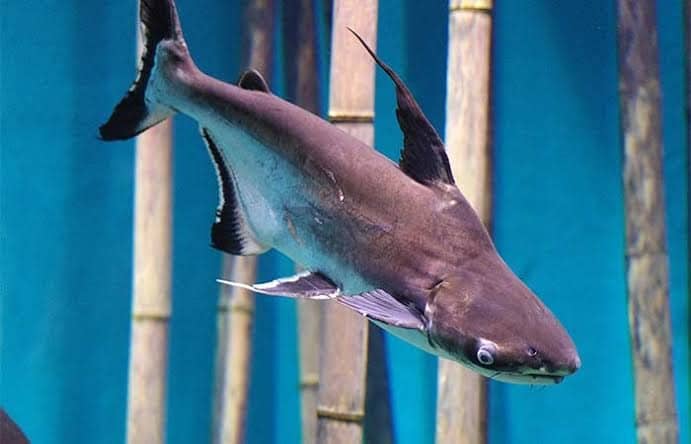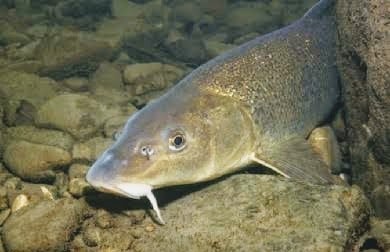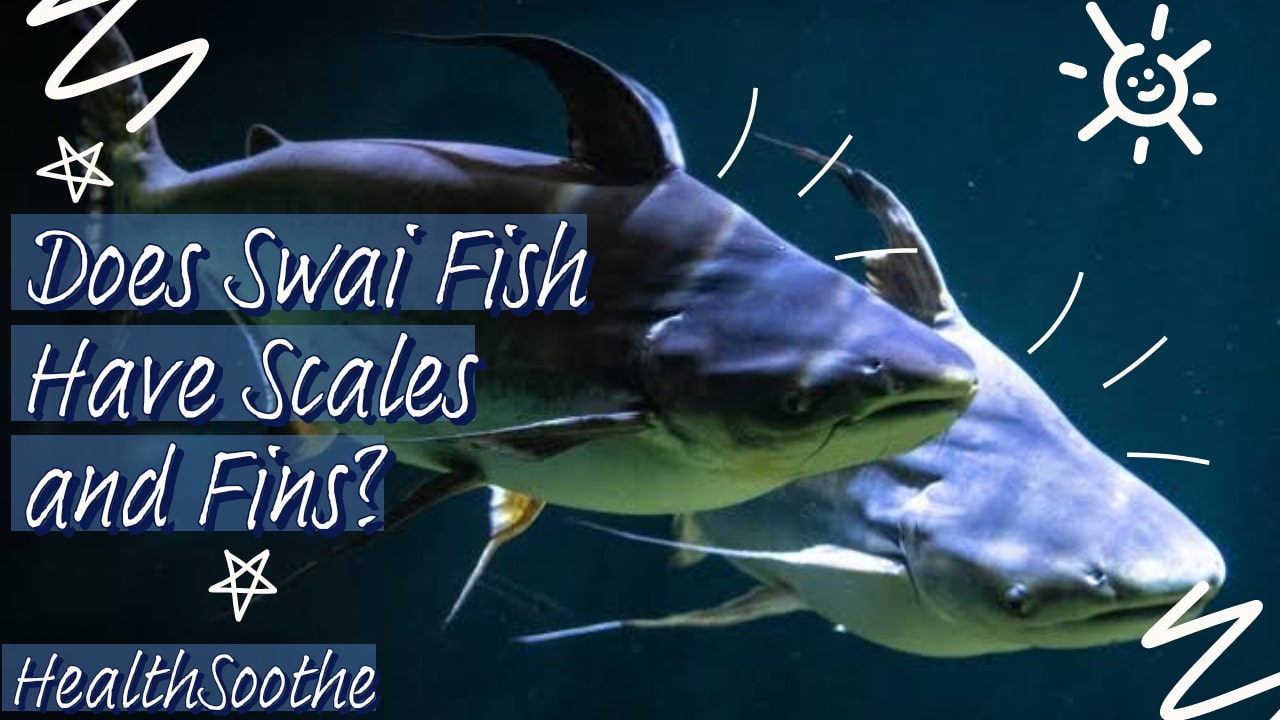Are you a seafood lover? If so, chances are you might have heard of Swai fish, isn’t it? So technically, this freshwater fish has gained popularity over the years due to its mild taste and affordability.
[ninja_tables id=”68398″]
Now, let’s clear up some confusion about this fish’s anatomy. A lot of people wonder if Swai fish have scales and fins. Well, it’s totally understandable because not everyone knows all details about this fish.
In this blog post, we’ll dive into everything you need to know about Swai Fish, discussing its physical features, and answering the burning question once and for all: does Swai fish have scales and fins?
So, keep reading to learn more about Swai fish and its distinct physical features!

What is Swai Fish?
Swai fish, also known scientifically as Pangasius hypophthalmus, is a freshwater fish that originated from Southeast Asia, particularly in Vietnam, Thailand, and Cambodia.
It has become increasingly popular in several countries, most especially in the United States due to its affordable price and mild taste. The Swai fish is characterized by its white flesh and delicate texture. In terms of flavor, it is often compared to cod or sole.
Swai fish can be found in various sizes, ranging from small fillets to larger whole fishes weighing up to 4 pounds. This makes it versatile for cooking methods such as grilling, frying or baking. Its mild flavor also makes it ideal for pairing with different types of spices and seasonings.
However, there have been concerns raised about the farming practices used to raise these fishes in countries like Vietnam where they are primarily produced for export purposes. This has led some customers to question the quality standards behind this product.
Despite this controversy surrounding Swai Fish production methods, many people still enjoy consuming this delicious seafood dish on a regular basis due to its affordability and versatility in cooking preparations.
Does Swai Fish Have Scales and Fins?
The answer to this question is simply, no and yes, I know it sounds confusing, right? But continue reading.
Swai fish do have fins, but do not possess scales. So in a nutshell, they are typically scaleless. You might be wondering how this fish is able to survive its aquatic habitat without scales.
Well the truth is, most species of fish, particularly swai fish, have evolved over the years that they do not need scales to survive their natural habitat. But how is this possible? They actually possess a thick layer of skin that helps shield them from predators, infections and parasites.
The skin also helps to reduce drag and provide thrust allowing the fish to swim more efficiently and quickly under water. It also gives the fish their distinctive shark-like appearance.
Let’s not forget, swai fish also possess fins. They have two dorsal fins located on their back, one anal fin near the anus at the bottom of the fish’s body, and several smaller fins along their sides.
Now that we’ve established the fact that Swai does indeed have fins but not scales, let’s take a closer look at this type of fish. Where does it come from? And what makes it unique compared to other types of seafood?
How Many Fins Does a Swai Have?
Well, like any other fish species, swai fish has several fins on its body. However, the number of fins can vary depending on the stage of development and age.
An adult swai fish typically has two dorsal fins – one located towards its head and the second closer towards its tail end. The first dorsal fin contains sharp spines while the second is soft-rayed for swimming purposes.
Also, there are also one anal fins present beneath the belly of a swai fish. These help in maintaining balance while swimming.
Swai fish also possess a pair of pelvic and pectoral fins near their midsection used for steering through water currents.
All these different types of fins work together to give swai fishes great manoeuvrability while under water making them efficient hunters when searching for prey or avoiding predators.
Does Swai Fish Have Bones?
The answer is yes, Swai fish do have bones, but they are relatively easy to remove.
The bones in Swai fish are not as thick or dense as those found in other types of fish such as salmon or trout. They are thin, delicate and don’t have any sharp points which makes them easier and safer to pull out using your fingers or tweezers.
Despite having lots of bones, Swai still remains a popular choice for many seafood enthusiasts due to its mild flavor and affordability. It also pose no serious threat when consumed with the fish
Is Swai Fish High in Mercury?
One of the concerns when it comes to consuming fish is the possibility of high levels of mercury, which can have harmful effects on our health. So, you might be wondering if Swai fish is high in mercury and if it’s safe to eat.
Before anything else, it’s essential to understand that any species of fish has some level of mercury in its system. However, the amount can vary depending on several factors such as age, size and habitat. Swai fish tends to have a lower concentration of mercury compared to other types like tuna or swordfish.
According to the Environmental Defense Fund (EDF), Swai fish has a moderate level of mercury content but falls under their “best choices” category for seafood consumption.
While it’s been known that swai fish does contain a moderate level of mercury content, the EDF recommends that people should limit their intake of this type of fish up to two servings per week.
Furthermore, the Food and Drug Administration (FDA) also suggests that pregnant women and children should avoid eating too much Swai Fish or abstain from it totally due to its mercury content.
What’s the Relationship Between Swai Fish and Catfish?
Swai fish is often compared to catfish because of their similar appearance and taste. However, they are not the same species of fish. Swai fish belong to the Pangasiidae family, while catfish belong to the Ictaluridae family. But they are both members of the same order “Siluriformes.”
Catfish is a broad term used to describe a variety of freshwater fish species native to North America but found all over the world that have long barbels on their faces, while Swai fish is a type of Asian catfish that is native to Southeast Asia.
While both swai and catfish can be farmed in aquaculture systems, they have different habitats in the wild. Catfish are typically found in freshwater rivers, lakes, and streams while swai live primarily in large ponds or reservoirs.
When it comes to cooking methods, both swai and catfish can be grilled, fried or baked. They are also versatile enough to work well with various seasonings or spices.
While they share some characteristics, it’s important to understand the differences between swai fish and catfish before making any assumptions about them!
Is Swai Fish the Same as Tilapia?
Swai fish and tilapia are both freshwater fish that are often used as affordable alternatives to more expensive seafood options. However, they are not the same species of fish.
Tilapia is a white-fleshed fish with a mild taste and a slightly sweet flavor. It has become popular due to its low cost and versatility in cooking. Tilapia can be farmed or wild-caught, but it is important to note that some farming practices may affect the quality of the meat.
On the other hand, Swai fish is also a white-fleshed fish that has a similar taste profile to tilapia but with a slightly milder flavor. It also tends to have a softer texture due to its higher fat content. Like tilapia, it can be farmed or wild-caught.
While these two types of fish share some similarities in terms of flavor and affordability, they are distinct species with different physical features such as body shape and coloration. Therefore, it is essential for consumers to understand their differences before purchasing either one for consumption.
What are the Distinct Physical Features of the Swai fish?
The Swai fish, also known by its botanical name as Pangasius hypophthalmus, is a type of freshwater catfish that’s native to Southeast Asia. It has several distinct physical features that set it apart from other types of fish.
1. The Swai fish has a long and slender body shape with slightly flattened sides. Its skin is smooth and lacks any visible scales, making it appear shiny and slippery to the touch.
2. Its dorsal fin runs along the length of its back and extends towards its tail. The anal fin is found on the underside of the body closer to the tail than head. Both fins have soft rays with no hard spines or serrations present in other species.
3. Swai fish have large eyes located high up on their heads which gives them excellent vision both above and below water level.

4. They possess barbels around their mouth area which distinguishes them from other similar-looking fishes like Tilapia or Catfishes who do not have many barbels on face except near nostrils region
5. Swai Fish are generally greyish-white in coloration with some yellowish-brown spots scattered across their bodies for camouflage purposes when swimming amongst rocks or weeds etc., although this can vary depending upon age,size and water quality/habitat where they live.
These unique physical features make it easy to identify Swai Fish in markets or restaurants when served as food items.
Conclusion
While we understand that there has been a lot of confusion surrounding Swai fish, we’ve tried our best to provide clear answers to the question: Does Swai fish have scales and fins?
After thorough research, we can confidently say that yes, Swai fish does have fins but it doesn’t have visible scales like some other species of fish. We hope this information has helped clarify things for you.
If you have any more questions about Swai fish or if there’s anything else you’d like to know, please don’t hesitate to leave a comment below. We’re here to help!








